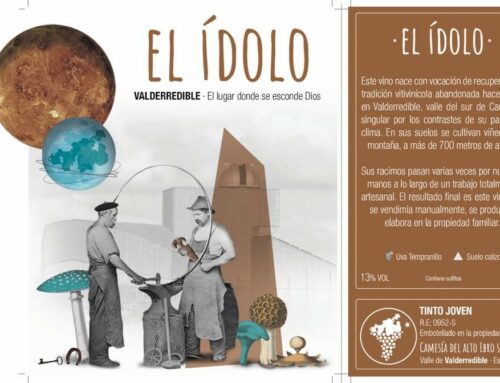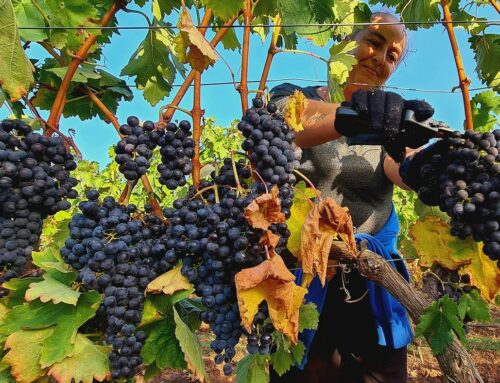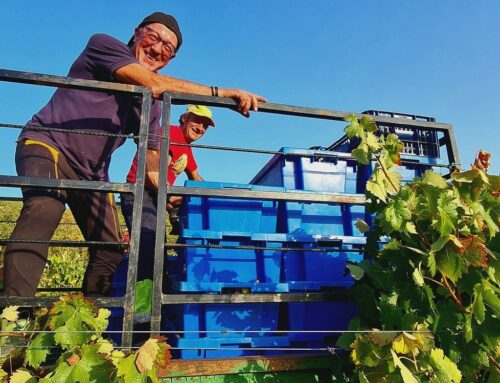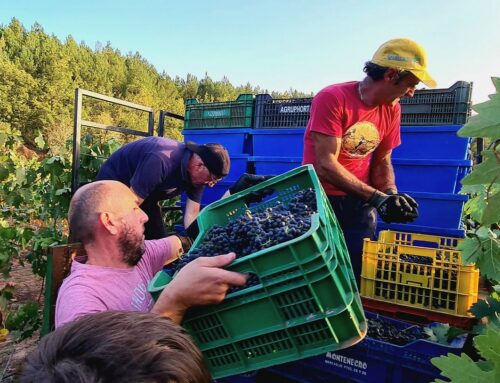A living laboratory: the minerals in the soil in which it grows, the hours of sunshine, the humid breeze of the Ebro river…
This living laboratory processes all these influences and converts them into aroma and taste.
The vine is not a demanding plant: it needs little water, little food and can withstand extreme climates. But, although the vine is not demanding of its environment, the vine grower is demanding of the grape and the truth is that each grape variety has its own characteristics, which vary according to the circumstances: the type of soil, the amount of sun and rain, the slope of a hill, the nearby forest…
THE CLIMATE OF THE VINE
First of all, it is necessary to have an area where the climate allows the plant to survive.
Because latitude is an insurmountable barrier for vines, whose production is restricted to two ranges between the parallels 30º and 50º north latitude and 30º and 40º south latitude.
When these limits are exceeded, we find areas with a clear lack of sunshine (which would prevent the grapes from ripening) or an average temperature that is warm all year round, with no seasonal differences. The few wine-producing areas that exceed these limits are regions that compensate for their latitude with a high altitude.
As far as rainfall is concerned, we have already mentioned that the plant requires little rain, although it is also true that an excessively prolonged drought can excessively limit the plant’s development.
At the other extreme, an extremely humid climate can cause the fruit to fatten excessively and lose flavour or even favour the appearance of certain diseases (fungi, parasites…).
In general terms, an average rainfall of between 400 and 800 mm per year is considered correct, but it must fall at the right time: between the end of spring and the beginning of autumn, which is when the vines need 80% of the humidity.
Untimely rain, especially at harvest time, can be disastrous.
THE VINEYARD SOIL
As far as the soil where the plant lives is concerned, its importance is such that, on occasions, only a difference of a few metres means that the same type of grape can produce different wines.
The soil, where the grape is born, is as important as the subsoil and its components.
Generally speaking, the vines that produce the best wines live in soils with little organic matter, slightly alkaline and well drained.
On the other hand, although vines need magnesium, potassium and phosphorus, the levels of these nutrients do not have to be very high.
Once the general needs are covered, we know that siliceous soils produce light wines with finesse and bouquet; limestone soils produce aromatic and full-bodied wines; clay soils, on the other hand, produce wines with a lot of colour and alcohol.
As far as the humidity of the soil is concerned, it should be rather low (the importance of a well-drained soil is well known since ancient times), although the vines are always grateful for the atmosphere provided by the proximity of the sea or a flowing river.
It is also necessary to have elements that can create a microclimate from which the grapes, and in the future, the wine, will benefit.
Having a forest nearby is equivalent to having a buffer against bad weather and sudden changes, just as a simple hill can be an excellent protection against the winds; a river ensures a beneficial relative degree of humidity.
In any case, it is important to remember that the aim is to achieve a healthy plant which, nevertheless, does not develop too vigorously in order to have a tasty fruit at the end of its cycle with the right degree of ripeness.










